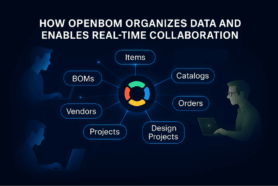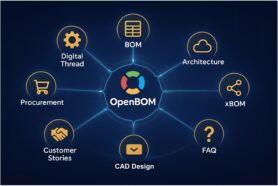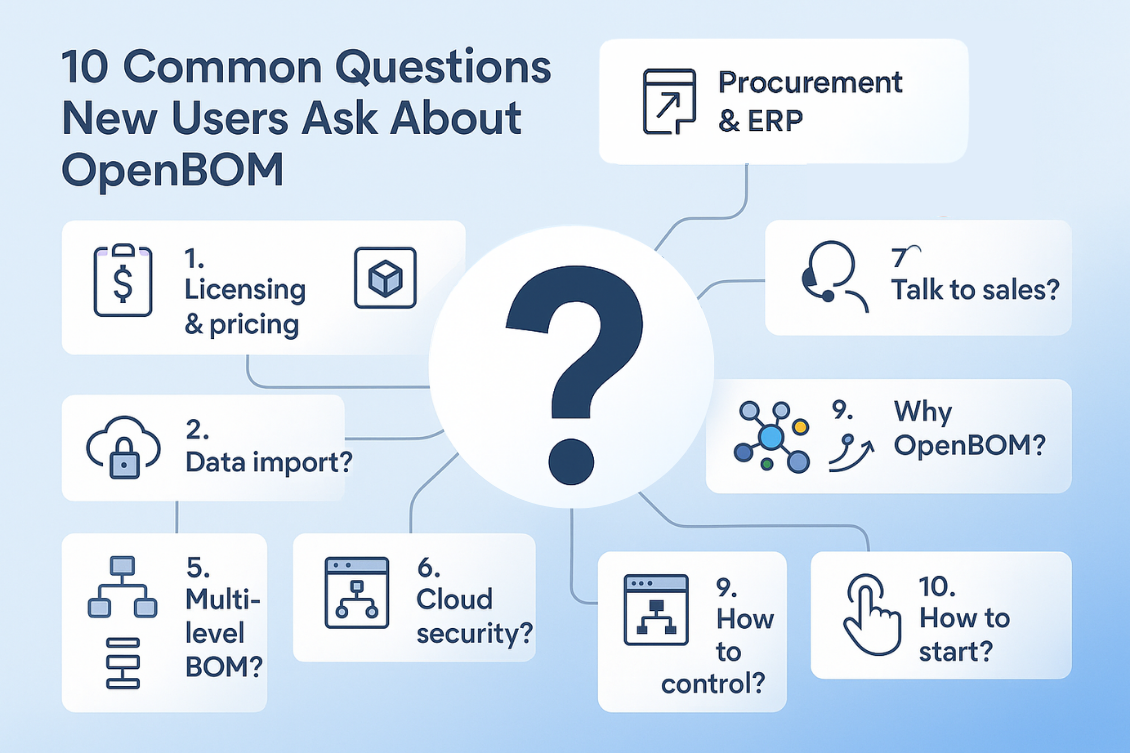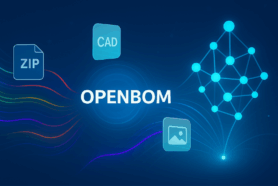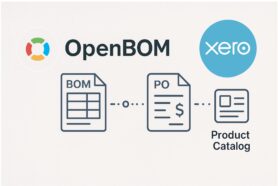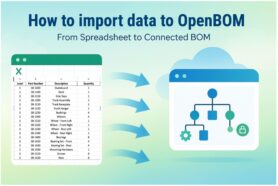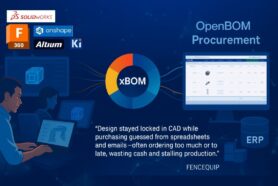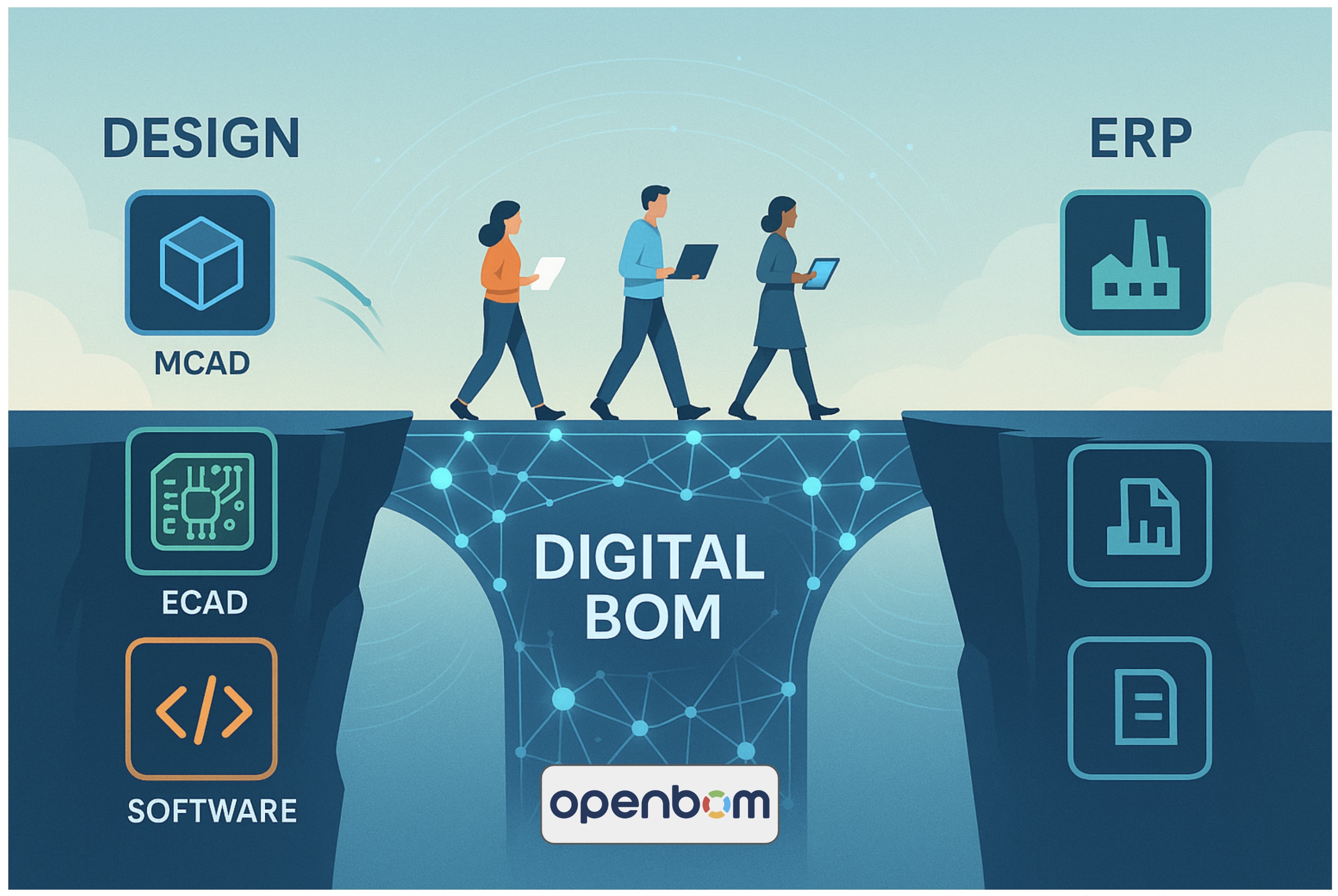
In 2025, the push for better design-to-manufacturing integration is stronger than ever. But for many companies, this still gets reduced to a simple question: “How do I send my BOM from CAD to ERP?” The reality is more complex.
Products today combine mechanical, electrical, and software elements, and keeping everything aligned takes more than just moving a file. That’s where the Digital BOM comes in. It acts as the central layer that brings design and manufacturing together, keeps engineering, production, and procurement on the same page, and even adds an AI-driven layer to spot issues and suggest improvements. It’s no longer just a parts list—it’s the backbone of modern collaboration between design and manufacturing. Let’s talk about it in my article today…
Introduction: Rethinking the Old Question
This is the most common question – how to send data (aka BOM/CAD) to ERP? At first glance, it seems like a practical question. Engineers create a design in CAD, and business systems need that information to purchase parts, plan manufacturing, and manage inventory. The natural instinct is to find a direct bridge: export from CAD, import into ERP.
But in 2025, this approach is outdated. Products are far more complex than they were even a decade ago. Companies are no longer producing only mechanical assemblies. Modern products integrate mechanical parts, electronic circuits, embedded software, cloud services, and even compliance or sustainability data. In this environment, treating the BOM as a static file that moves one way—from CAD to ERP—is no longer sufficient.
The conversation is shifting. The real challenge is not simply transferring a BOM but consolidating product data across disciplines, keeping it accurate, enabling collaboration, and turning it into a foundation for intelligent decision-making. This is where the concept of the Digital BOM becomes central.
The Rising Complexity of Product Data
The primary driver for rethinking CAD-to-ERP integration is complexity. Mechanical CAD (MCAD) remains important, but it is only one part of the picture. A modern product often combines:
- Mechanical CAD (MCAD): 3D models, assemblies, part details, tolerances.
- Electrical CAD (ECAD): schematics, printed circuit boards, wiring harnesses.
- Software: embedded firmware, cloud services, mobile apps, APIs.
- Systems data: requirements, test results, configurations, variants.
Each of these disciplines produces its own “BOM-like” structure, often with unique formats and semantics. The mechanical BOM doesn’t look like the electronic component list, and neither resembles a software dependency chart.
If organizations try to push CAD data directly into ERP, they quickly face fragmentation. ERP systems are built to manage materials, suppliers, inventory, and cost—but they are not designed to absorb raw multi-disciplinary product structures. The result? Errors, manual workarounds, and lost time.
This is why the Digital BOM has become essential. Instead of attempting to push unrefined CAD data straight into ERP, companies consolidate and normalize product information into a unified layer.
The Digital BOM as the Consolidated Layer
Think of the Digital BOM as a hub where information from multiple disciplines converges. It is not a simple spreadsheet. Instead, it is a structured, living data model that can represent:
- Mechanical components from CAD assemblies.
- Electronic parts from circuit designs.
- Software items, versions, and configurations.
- Purchased parts, supplier links, and cost data.
- Compliance, sustainability, and lifecycle attributes.
This consolidated layer ensures that all relevant product data—no matter its source—can be connected, traced, and transformed into formats usable by other enterprise systems.
In practice, this means the Digital BOM provides both a comprehensive view of the product and the flexibility to output discipline-specific or system-specific representations. ERP may need a manufacturing BOM. Procurement may need supplier references. Compliance teams may need a report on restricted substances. All of these views can be generated from the same consolidated digital structure.
By adopting a Digital BOM, companies move from siloed, discipline-specific data to an integrated model that represents the entire product lifecycle.
The Collaboration Layer: One BOM for All Teams
A second critical role of the Digital BOM is collaboration. In most companies, engineering and manufacturing teams speak different “data languages.” Engineers think in CAD assemblies; manufacturing planners think in routings and operations; procurement thinks in suppliers and lead times.
The traditional CAD-to-ERP integration often fails because it attempts to translate directly between these languages. The result is misalignment, endless spreadsheets, and finger-pointing when errors occur.
The Digital BOM changes the game by serving as a collaboration layer. Everyone—engineers, manufacturing planners, procurement, suppliers—can access and work from the same structure. Instead of passing files or snapshots, teams collaborate on a shared source of truth.
Some examples:
- Engineering to Manufacturing: Engineers release an updated design, and manufacturing planners can immediately see the impact on routings and materials.
- Procurement: Buyers can link supplier data directly into the BOM and track alternates or substitutes.
- Quality and Compliance: Teams can flag risks, such as restricted materials, before they reach production.
This shared collaboration layer reduces errors, accelerates decision-making, and builds trust across teams. Everyone is literally “on the same BOM.”
Intelligence: Adding the AI Layer to the BOM
The third transformative aspect of the Digital BOM is intelligence. With a structured, consolidated BOM in place, companies can apply AI to check, validate, and optimize product decisions.
Here are a few practical scenarios:
- Error detection: AI can catch duplicate part numbers, missing suppliers, or mismatched units of measure.
- Design optimization: Algorithms can suggest alternate components that reduce cost or lead time.
- Sustainability checks: AI can flag parts that fail environmental or compliance standards.
- Supply chain risk analysis: Machine learning models can evaluate supplier performance and identify vulnerable single-source parts.
This intelligence layer turns the BOM from a passive record into an active decision-support system. Instead of waiting for problems to appear in production, AI-enhanced BOMs highlight issues in design and planning stages, saving time and money.
In 2025, companies are beginning to see the BOM not just as a container of data, but as a platform for product intelligence.
Why the Digital BOM Matters More Than Ever
At this point, it should be clear that the Digital BOM is more than just a convenience—it is a necessity. Without it, companies risk:
- Fragmented data: Mechanical, electrical, and software teams working from different structures.
- Error-prone handoffs: Manual spreadsheets and custom scripts breaking the chain between CAD and ERP.
- Silos: Procurement, engineering, and manufacturing making decisions in isolation.
- Slow decision-making: Delays caused by reconciling mismatched data across systems.
By contrast, companies with a robust Digital BOM enjoy:
- Consolidation: A unified product data layer across disciplines.
- Collaboration: Shared access to a single source of truth.
- Intelligence: AI-powered checks, optimizations, and insights.
- Agility: Faster, more confident decision-making across design and manufacturing.
In other words, the Digital BOM is not just a bridge between CAD and ERP—it is the backbone of modern product lifecycle management.
A New Way to Think About CAD-to-ERP
The central message for 2025 is that the old question—“How do I send my BOM from CAD to ERP?”—is too narrow. It assumes a point-to-point transfer, as if the BOM were a static file. But product development today demands more.
The real question should be:
“How do I create a Digital BOM that consolidates disciplines, enables collaboration, and powers intelligent decisions across CAD, ERP, and beyond?”
This perspective elevates the BOM from a transactional artifact to a strategic asset.
Conclusion: The Digital BOM as the Foundation for Intelligent Collaboration
In today’s product landscape, success depends on mastering complexity. Products combine mechanical, electrical, and software elements. Teams span engineering, manufacturing, procurement, and compliance. Decisions must be made quickly and confidently.
The Digital BOM is the foundation that makes this possible. It consolidates multi-disciplinary data, provides a collaboration layer where everyone works from the same source of truth, and unlocks an intelligence layer where AI improves quality, cost, and efficiency.
The companies that thrive in 2025 will be those that stop asking how to “send” a BOM from CAD to ERP, and instead focus on how to build and leverage a Digital BOM as the central nervous system of their product lifecycle.
Want to check how Digital BOM can help you? OpenBOM provides many integrations with CAD and ERP systems
REGISTER FOR FREE and check it for 14 days.
Best, Oleg
Join our newsletter to receive a weekly portion of news, articles, and tips about OpenBOM and our community.


